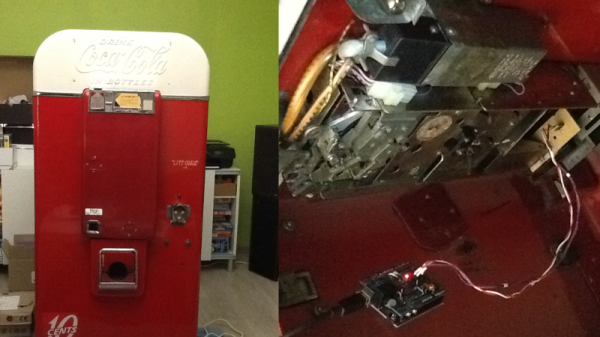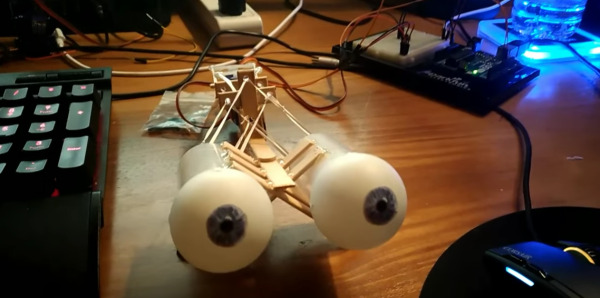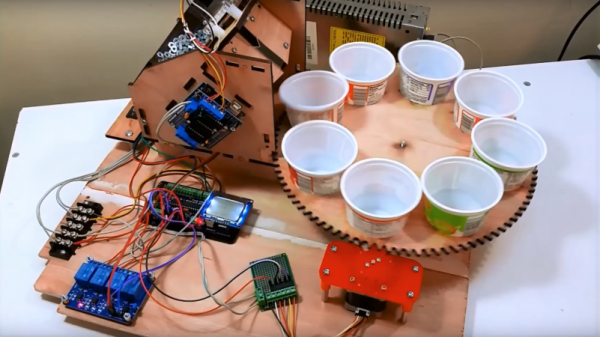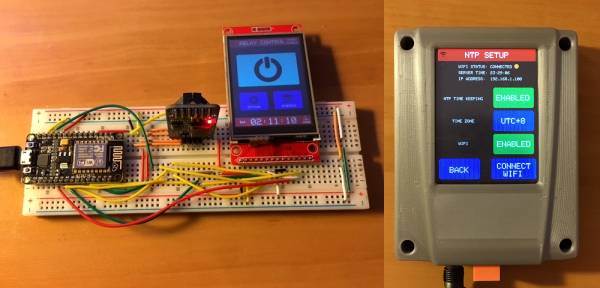Nothing says ‘I Love You’ like an old vending machine, and if it is a restored and working vintage Vendo V-80 cola dispenser then you have yourself a winner. [Jan Cumps] from Belgium was assigned the repair of the device in question by a friend. He started off with just a working refrigerator and no electronics. In a series of repairs, he began with replacing the mechanical coin detector’s switches with optical and magnetic sensors to detect the movement of the coin. These sensors are in turn connected to an Arduino which drives the dispensing motor. The motor itself had to be rewound as part of the repair. Since the project is on a deadline, the whole thing is finished using protoboards and through-hole parts. The final system works by dispensing one frosty bottle every time a coin is inserted.
In contrast to most vending machine repairs, this project was a simple one. Instead of using an off-the-shelf coin detector, a simple LED and photodiode pair brought the hack to life. This could easily be adapted to any machine and even be used to create a DIY vending machine on the cheap. Continue reading “Vintage Vending Machine Makes The Perfect Gift”

















